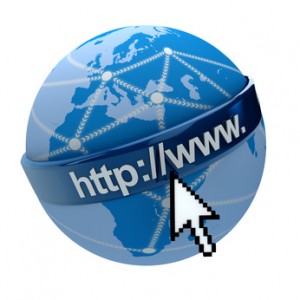Paris, 8 September 2016 – The European Court of Justice published today an important decision on the legal status of hypertext links, a key element of the Web. Sadly, it has chosen to discard the conclusion of the General Attorney, by ruling that posting a link to content illegally published online is a copyright infraction. This jurisprudence has contributed to weaken hyperlinks and how the Web works, at a moment were the European Commission is also questioning the liberty to link.

Is creating a hyperlink to pictures illegally posted online a copyright infraction? This is the question that the ECJ had to answer in a case involving a press website in The Netherlands.
For a long time, the status of hyperlinks was uncertain as it didn’t constitute in itself a reproduction or a representation, both cases where copyright is traditionally applied. In the 2014 Svensson decision, the ECJ had also the opportunity to compare a hyperlink to a protected work to a “communication to the public”, this blurry and ambiguous notion found in the 2001 Directive on Copyright was already an extension of the scope of copyright. However, in 2014, the Court had strongly limited the scope of its decision, considering that a hyperlink to a work published with the agreement of the author, isn’t a communication to a “new public” and no further authorisation is needed. By doing so, the ECJ preserved the liberty to link, which is key to the proper functioning of the Web.
However, this decision left untouched the question to know if making a link to a protected work published without the agreement of the author (thus illegally) constituted an act of counterfeit. Last April, the General Attorney Melchior Whatelet recommended that it shouldn’t be the case. He considered that if users may risk being charged with copyright infringement for simple hyperlinks, freedom of speech and communication would be seriously compromised.
In doing so, he shared the position of La Quadrature du Net, arguing thatfreedom to link should be total for the sake of legitimacy.
Alas, the Court hasn’t followed this path. Following the logic of the Svenssion decision, it considered that creating a hyperlink to a work illegally published online can constitutes an act of communication to the public, which requires the prior agreement of the right-holders. The Court adds two more criteria that will allow to discriminate depending on the situation:
- If the individual who made a hyperlink doesn’t have a for-profit goal, s/he would benefit of a presumption of good will and it would be necessary that s/he had conscience of the illegal nature in order to make a condemnation for the creation of the link.
- If the individual has a for-profit goal, the presumption of good will is overruled and it would be necessary to provide a proof of good will.
However, these two conditions are rather unclear, so they create a worrying situation of legal uncertainty. There are many situations where it would be very difficult, for both an individual or a professional, to check if a work has been put online legally or not. Professional websites will be forced to carry out complex checks because of the rules established by the ECJ, even though an information website may have valid reasons for pointing towards illegal content for information purposes, for example. Additionally, it may prove very hard to establish what is and what isn’t a non-profit purpose online. For example, a blog that displays a simple advertising banner may be considered for-profit, and may face a high risk of being hold accountable.
Nonetheless, it may indeed be interesting to use the distinction between for-profit and non-profit to decide on what constitutes a counterfeit. La Quadrature du Net has already raised calls to regulate on the non-profit sharing between individuals. However, in this case, the ECJ is ruling on mere hyperlinks, instead of looking at the sharing of works. Furthermore, the criteria it uses are far more unclear that what La Quadrature put forward in order to establish a clearer boundary around non-profit sharing.
The only positive condition that is possible to draw from this decision is that the automatic sanctions systems (those used regarding the content such as robocopyright…) couldn’t probably be put into action in this framework as a case-by-case verification is needed and block and systematisation of the sanction.
In conclusion, the ECJ takes the responsibility with this decision to undermine the bases of how the Web works by creating strong insecurities for any individual who would make a hyperlink and especially professionals players. It is very unfortunate as few Member States, such as Germany, Spain or even France, have already adopted legislations indirectly targeting hyperlinks in cases of indexation of press contents or pictures in search engines. And the Commission seems decided to generalise such a system by creating a new related right for press editors in the next directive on copyright.
In view of these abuses, La Quadrature du Net reaffirms its 2012 writing on the imperative to protect hyperlinks: “The Internet is above all defined by the possibility to make links to any type of content as long as you know its URL. This is the modern equivalent to making a reference to a published content. The possibility to reference content through links is an essential condition for freedom of speech and freedom of communication.”

